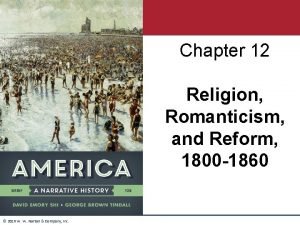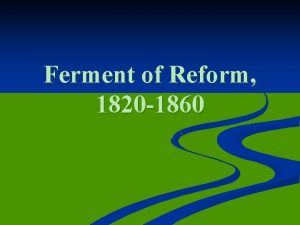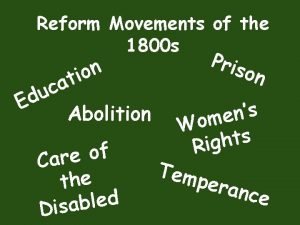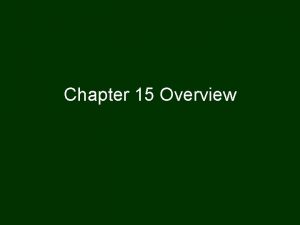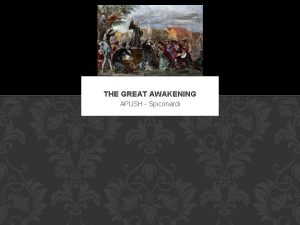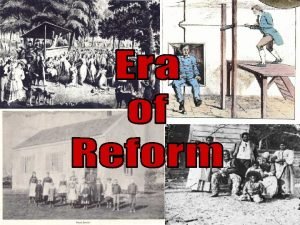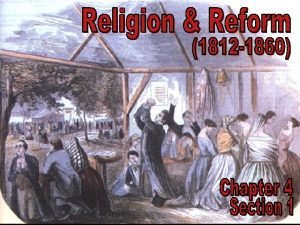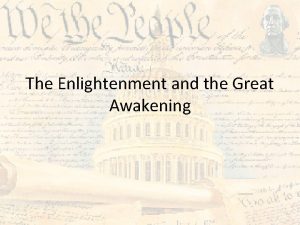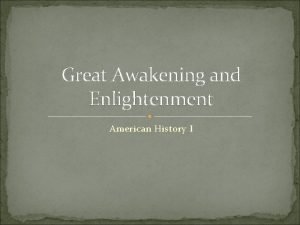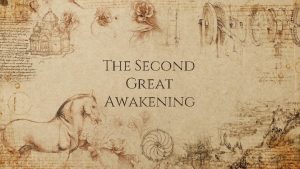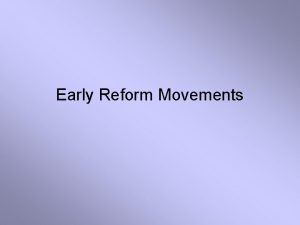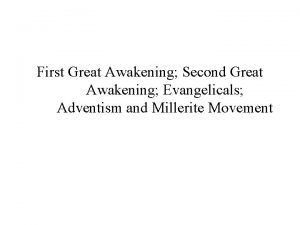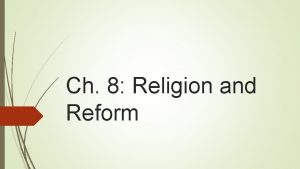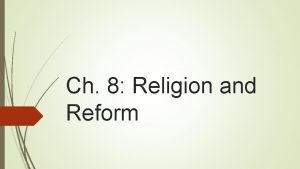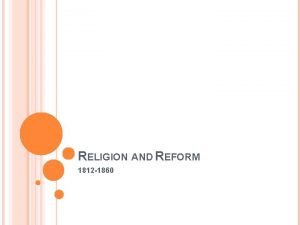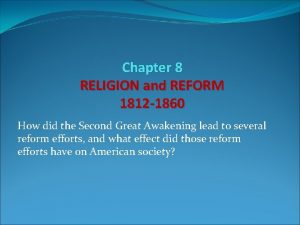RELIGION AND REFORM 1812 1860 SECOND GREAT AWAKENING










- Slides: 10

RELIGION AND REFORM 1812 -1860

SECOND GREAT AWAKENING • The Second Great Awakening was a Protestant revival movement during the early 19 th century in the United States. • Protestant preachers believed Americans had become immoral • These preachers were known as ‘revivalists’ because they felt that religious participation had to be revived. • Membership in the major Protestant churches—Congregational, Presbyterian, Baptist, and Methodist—soared • The Methodist and Baptist churches became the two largest Protestant denominations in the U. S.

SECOND GREAT AWAKENING • Movement began on the Kentucky frontier with itinerant preachers (circuit riders) such as Peter Cartwright in outdoor “camp meetings” (Cane Ridge Revival) • Reached northeastern cities by 1820 s • Wealthier, better-educated levels of society were not as affected by revivalism (e. g. Episcopalians, Presbyterians, Congregationalists and Unitarians). • Poorer communities in the rural South and West were the most affected by religious revivalism. • The slavery issue split Baptists, Methodists, and Presbyterians along sectional lines. (The secession of southern churches foreshadowed the secession of southern states. )

SECOND GREAT AWAKENING • Society during the Jacksonian era was undergoing rapid change • Because of the uncertainty of the times reformers sought stability in religion • Church-goers embraced the values of hard work, punctuality, and sobriety • Revivals brought unity, strength and a sense of peace

CHARLES GRANDISON FINNEY • By the 1820 s, the most famous revivalist preacher • Preached passionately and used Evangelical style of worship • Sermons designed to bring about strong emotions and convert people publically to Christianity • Meeting night after night to build excitement • Spoke bluntly; Prayed for sinners by name • Encouraged women to testify in public • Placed those struggling with conversion on the “anxious bench” at the front of the church

LYMAN BEECHER • Traveled and urged people to read the Bible, join a church; In 1832, became president of Lane Technological Seminary in Cincinnati • Many revivalists, like Beecher, preached of a new millennium, a thousand years of glory that would follow the second coming of Christ • Believed that heaven through good works and helping others was possible • Inspired people to become reformers, to make the world a better place in preparation for Christ returning

BURNED OVER DISTRICT • • • Burned over district in Western NY got its name from a “wild fire of new religions” Charles Finney preached for 6 months in Rochester and helped 100, 000 people convert The Millerites believed the 2 nd coming of Christ would occur on October 22, 1843 Members sold belongings, bought white robes for the ascension into heaven Believers formed new church on October 23 rd Gave birth to Seventh Day Adventists

RISE OF AFRICAN AMERICAN CHURCHES • Revivalism also spread to the African American community • During these revivals Baptists and Methodists converted large numbers of African Americans • This led to the formation of allblack Methodist and Baptist churches, primarily in the North • African Methodist Episcopal (A. M. E. ) had over 17, 000 members by 1846

THE AGE OF REFORM • Reformers pointed out the inequality in society • Primarily a Northern movement • Southerners refused reforms to protect slavery • Educated society through newspaper and lyceum meetings

The Second Great Awakening + Industrial Revolution + Cult of Domesticity=Social Reform Temperance Asylum & Prison Reform Education Abolitionism Women’s Rights
 Chapter 12: religion, romanticism, and reform, 1800–1860
Chapter 12: religion, romanticism, and reform, 1800–1860 American reform movements between 1820 and 1860
American reform movements between 1820 and 1860 Second great awakening
Second great awakening Second great awakening apush chapter 15
Second great awakening apush chapter 15 2nd great awakening apush
2nd great awakening apush Second great awakening definition
Second great awakening definition Second great awakening enlightenment
Second great awakening enlightenment Great awakening
Great awakening Define second great awakening
Define second great awakening Great awakening vs enlightenment
Great awakening vs enlightenment Great awakening and enlightenment
Great awakening and enlightenment
